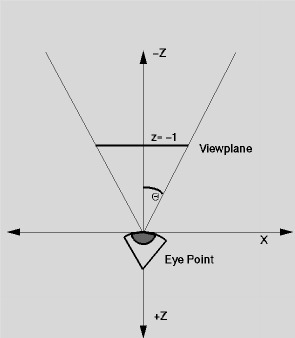Object Space Algorithms
General Idea:
For each Object
For each Polygon
For each edge (v1,v2)
determine how many faces cover v1
{for each object, for each polygon}
Determine all edges that intersect (v1,v2):
For each object
For each edge
intersect 2D projection of (v1,v2) with edge
if (v1,v2) behind edge
record x,y,z intersection and +/- 1
sort intersections
keep running count (v1,v2): if count 0, visible
- Roberts - 1st Hidden Line Algorithm
- - Test each edge to see if it is obstructed by volume
of an object.
- - Write parametric equation for viewpoint to point on the edge.
- - P is inside a convex objectj if P is on the inside
of all planes that form j.
- - All objects must be convex.
- - O(n2).
- - Uses spatial coherence - tests edges against object
volumes.
- Appel (Loutrel, Galimberti similar) - Quantitative Invisibility -
Hidden Line
- -quantitative invisibility of a part =
- number of relevant
faces that lie between the point and the viewpoint.
- -need to compute quantitative invisibility of every point on
every edge.
- -edge coherence: quantitative invisibility of an edge only
changes when
- projection of that edge into the picture plane crosses
the projection of
- a contour edge. At this intersection, quantitative
invisibility changes by +1 or -1.
- -edges are divided into segments at these intersections.
- Weiler-Atherton - Area - HS or HL
- - Perform preliminary depth sort of polygons
- - Clip based on polygon nearest the eye-point
- creates inside list and outside list.
- - Removal of all polygons behind the nearest to the eye-point
- - Recursive subdivision, if required,
- - Final depth sort to remove any ambiguities.



